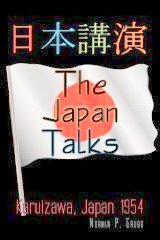
Sunday, Oct. 29, 2006
NEW YORK (Kyodo) The Tokyo Metropolitan Government kicked off a Tokyo Fiesta promotional event in New York on Friday as part of efforts to double the number of overseas tourists.
Visitors at the Tokyo Fiesta event in New York on Friday watch a craftsman as he makes a "chochin" lantern. KYODO PHOTO
"I understand that within the United States, New York has the greatest number of residents that travel abroad," Tokyo Vice Gov. Yasuo Sekiya said. "I hope more New Yorkers will visit Tokyo."
The two-day festival at New York's famed Grand Central Stations is focused on both traditional Japanese crafts such as "chochin" (lantern making) and ukiyo-e woodblock prints as well as new technology and art from young students and artists.
Videotapes featuring Tokyo are being shown at the venue and craftsmen are demonstrating how to make lanterns and "sudare" blinds.
A three-dimensional film showcasing Tokyo's cultural highlights, koto performances, sake tastings and Japanese cream puffs, or "choux cream," are also featured.
The event is highlighting major upcoming events in Tokyo, such as the first Tokyo Marathon in February, and an international anime fair in March.
"I'd love to go to Tokyo," said Joanna Minardi, a ukiyo-e fan who came especially to see the reproductions of 30 of Ando Hiroshige's "One Hundred Views of Famous Places in Edo."
"I think the Japanese are extremely brilliant," she added.
A 61-year-old visitor from Massachusetts who used to live in Japan said the event made him want to visit the country again.
Tokyo and New York have been sister cities since 1960. They have engaged in a series of exchanges meant to increase cultural understanding over the last 40 years, including a baseball exchange and various arts programs.
The first fiesta was held in New York in February.



















